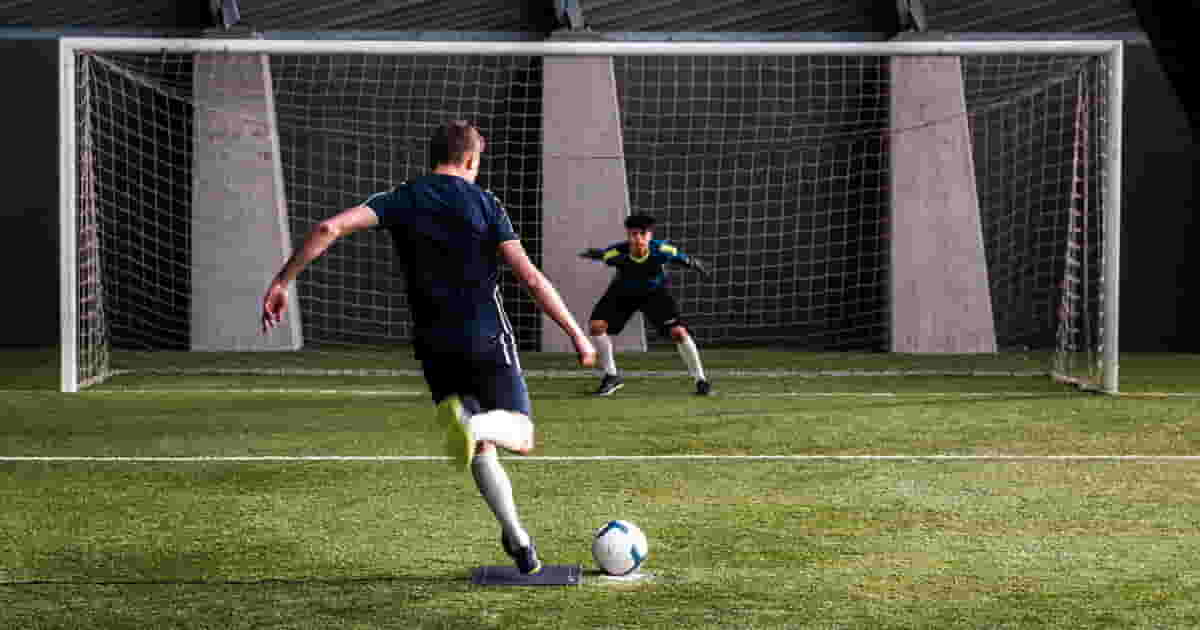how to kick a football is one of the most crucial skills that can make a difference on the field. Whether you are a beginner or want to perfect your technique, it is important to know the different types of kicks and how to execute them. Football coaches Ben Nabers and Brandon Busbee break down three fundamental types of kicks to help you build your confidence and skills on the field.
Basics of how to kick a football

1. Ground Pass: A Simple and Effective Kick
The ground pass is one of the most basic and essential techniques in football. It’s used for passing the ball over short distances while keeping it on the ground. Here’s how to execute it properly:
– Positioning: Approach the ball from a complete angle and align beside it with your kicking foot’s inside. Keep in mind to bend your knee slightly.
– Swinging The Kick Through: Lean forward, whip through the ball’s middle with the inside edge of your foot, and keep your foot locked throughout the motion.
– Aim: The goal is to pass the ball accurately to your teammate by hitting the center of the ball with the inside of your foot.
2. Chip Shot: Sending the Ball into the Air
The chip shot, or aerial pass, is a technique used to lift the ball over an opponent or pass it a longer distance. Here’s how to perform it effectively:
– Positioning: Approach the ball with your kicking foot positioned next to it, ensuring that your knee is slightly bent.
– Kicking Motion: Point your toes downward and bend your leg to scoop underneath the ball with the inside of your foot. Lean back slightly to help lift the ball into the air.
– Objective: Strive to get under the ball and kick it high in order for the opponent to be in its way, creating a higher chance to pass to another teammate, or even score.
– 3. Goal Shot: Power and Accuracy for Scoring
The goal shot is the most powerful kick in football, aimed at scoring. Use the following steps to guarantee that your shot goes all the way to the goal, with accuracy:
Positions: Approach the ball with the kicking foot facing down on the ground, at an appropriate distance from the ball.
Kicking motion: Bend the kicking leg and use the laces part of the shoe to strike the middle of the ball, slightly forward to ensure the ball will not soar too high.
– Aim: The goal is to strike with enough force to lift the ball off the ground, but not so much that it flies over the goal. Practice this technique to learn the right balance between power and accuracy.
Drills to Improve Your Kicking Skills
While understanding the correct technique is crucial, practicing regularly is the key to mastering these kicks. Coaches recommend incorporating specific drills to refine your skills.
Ground Pass Drill
– Setup: Place two cones about 3 to 4 meters apart, and position yourself 4.5 to 7.3 meters away from a wall.
– Execution: Using the ground pass technique, kick the ball towards the wall so it lands between the cones. Practice with both feet, aiming to improve your accuracy. Gradually move the cones closer together to challenge your precision.
Chip Shot Drill
– Setup: Place two cones 3 to 4 meters apart and position yourself 13.7 to 18.3 meters away from the wall (or your partner if you’re practicing with someone).
– Execution: Use the chip shot technique to strike the ball so that it hits the wall or reaches your partner in between the cones. Focus on improving the accuracy and height of your chip shots by practicing with both feet.
Goal Shot Drill
– Setup: Position the ball 7.3 to 9.1 meters from the goal, and prepare to strike.
– Execution: Rush towards the ball and execute the goal shot motion to aim for one of the four quadrants of the goal. Practice using both feet and as you improve, increase the distance from the goal to refine your power and accuracy.
Joining a League: The Best Way to Test Your Skills

While drills and practice are important, applying your skills in a game situation is essential for real growth. Joining a local football league or community team will give you the opportunity to test your kicking technique in competitive settings. Most leagues offer practice sessions a few times a week, with matches on the weekends. Practicing with a team will enhance your coordination and improve your overall gameplay.
Final Tips for Mastery

– Consistency is Key: Practice regularly, ideally 3 to 5 days a week, for 10 to 20 minutes each session.
– Work on Both Feet: Developing both feet will make you a more versatile player and help improve your accuracy in different situations.
– Focus on Control and Power: Striking the ball with the right balance of control and power is critical to executing successful passes and shots.
By following these expert tips and dedicating time to practice, you’ll become a more confident and skilled football player, ready to make an impact on the field.
ALSO READ: Top 4 Match Finishers of All-Time Who Ruled International Cricket






























